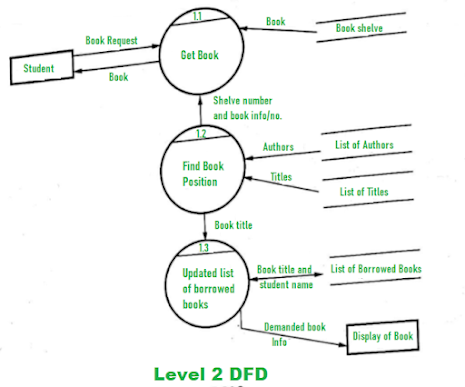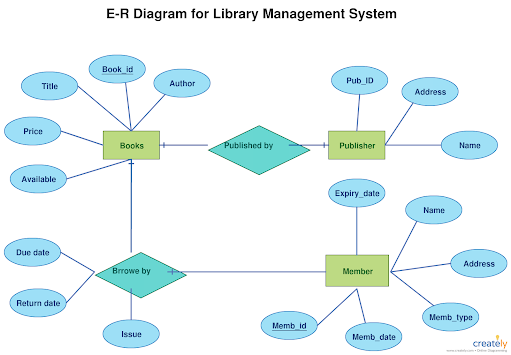Sessions 19 and 20
Sessions 19 and 20: Assume that you interested in developing
a “Library Information System (LIS)”. Visit any Library.
As a visitor of Library, make a list of requirements
that need to be fulfilled by LIS. Now, develop Software for LIS. Ensure yourself that LIS developed
by you is fulfilling the requirements. Preferably, try to obtain requirements for LIS from any person who
visits a library, develop LIS and then get it Software Engineering Lab validated by him/her.
Library Management System
This software project is a library management software
system with all the basic as well as some innovative features for managing a
library. It consists of a large database of various books available in the
library. It also lists various books issued to respective readers. The system
keeps track of all the books readily available and also the books that have
been issued to various readers for the time period for which the books have
been issued. The system also handles the books database. If the reader needs a
book, he can order the book request for home delivery by just submitting an
online form. Readers usually tend to forget the date to return their library
books, so this system even calculates fine depending on the expiry date. Thus,
this innovative library management system provides enhanced library
functionality for this modern world.
Features of the system: -
· Admin
login: The system will be under the sole control of the admin. Admin can
add or remove books from the system and also maintains records of the book
available and issued in the library. The admin can even update the book's
details if required.
· User
login: The user has to first create an account in the system to gain
access. User can explore and search for the books he wants. He can place an
order for the books.
· Tracking
the user record: The system can track the period for which the book has
been issued to the user and calculates a fine if the book is not returned on
time.
· Quantity
Update- The quantity is updated by the system depending on the quantity
ordered.
· Fine
calculation: If the user is unable to return the book, the system automatically
calculates the fine that the user has to pay for subsequent days.
· View
date info- The user can view the date when he has issued the book as well
as the expiry date of the book and can view the fine to be paid that is
calculated by the system.
· Online
search and order form: The user may order the book online. The system
provides a search option where users can order online.
· Credit
card payment: The user can make payment via credit card.
Software Requirements:
· Windows
XP, Windows 7(ultimate, enterprise)
· SQL 2008
· Visual
studio 2008
Hardware Components:
· Processor
– i3
· Hard
Disk – 5 GB
· Memory –
1GB RAM
Advantages:
· The
system excludes the use of paperwork by managing all the records
electronically.
· Administrator
doesn't have to keep a manual track of the users
· Also,
the system calculates the fine levied on the user so the admin just has to
create a bill and not manually calculate it.
· Admin
can keep updating the system by providing the new books arrival in library and
their availability thus the user need not go to the library for issuing
purpose. He may order it online through this system.
· Thus, it
saves human efforts and resources.
Disadvantages:
· User
cannot view the book in person.
· There is
no human interaction if users have some inquiry.
Applications:
· This
system can be used in public libraries.
· It can
also be implemented in the library of schools, colleges, institutes, and
organizations.
Data Flow Diagrams -:
1) 0-Level DFD -:
2) 1-Level DFD -:
3) 2-Level DFD -:
Entity Relationship Diagram -:
Modules Description -:
Entities and their Attributes –
- Book
Entity: It has author, ISBN number, title, edition, category, price. ISBN
is the Primary Key for Book Entity.
- Reader
Entity: It has UserId, Email, address, phone no, name. Name is composite
attribute of firstname and lastname. Phone no is multi valued attribute.
UserId is the Primary Key for Readers entity.
- Publisher
Entity: It has PublisherId, Year of publication, name. PublisherID is the
Primary Key.
- Authentication
System Entity: It has LoginId and password with LoginID as Primary Key.
- Reports
Entity: It has UserId, Reg_no, Book_no, Issue/Return date. Reg_no is the
Primary Key of reports entity.
- Staff
Entity: It has name and staff_id with staff_id as Primary Key.
- Reserve/Return
Relationship Set: It has three attributes: Reserve date, Due date, Return
date.
Relationships between Entities –
- A
reader can reserve N books but one book can be reserved by only one reader.
The relationship 1: N.
- A
publisher can publish many books but a book is published by only one
publisher. The relationship 1: N.
- Staff
keeps track of readers. The relationship is M: N.
- Staff
maintains multiple reports. The relationship 1: N.
- Staff
maintains multiple Books. The relationship 1: N.
- Authentication
system provides login to multiple staffs. The relation is 1:N.
Use Case Diagram -:
Future Scope -:
This application can be easily implemented in various
situations. We can add new features as and when we require them. Reusability is
possible & also flexible in all the modules.
Software Scope -:
- Extensibility
- This software is extendable in ways that its original developers may not
expect. The following principles enhanced extensibility: hiding data
structures, traversing multiple links or methods, avoiding case statements
on the object type, and distinguishing between public and private
operations.
- Reusability
- Reusability is possible as & when required in this application.
We can update its next version. Reusability software reduces design,
coding, and testing cost by amortizing effort over several designs.
Reducing the amount of code also simplifies understanding which increases
the likelihood that the code is correct. We both follow up on both types
of reusability. Sharing of newly written code within a project & reuse
of previously written code on new projects.





Comments
Post a Comment